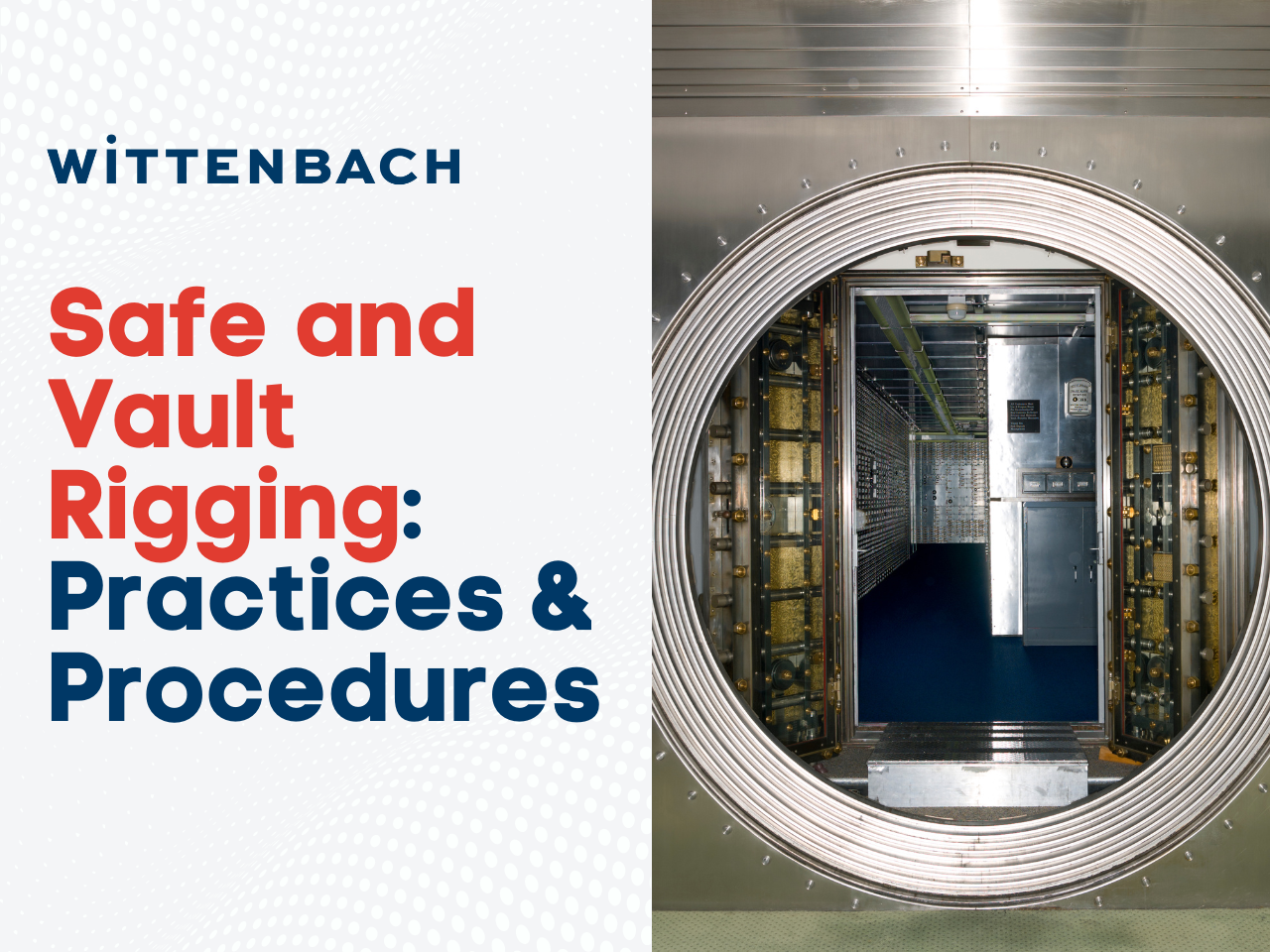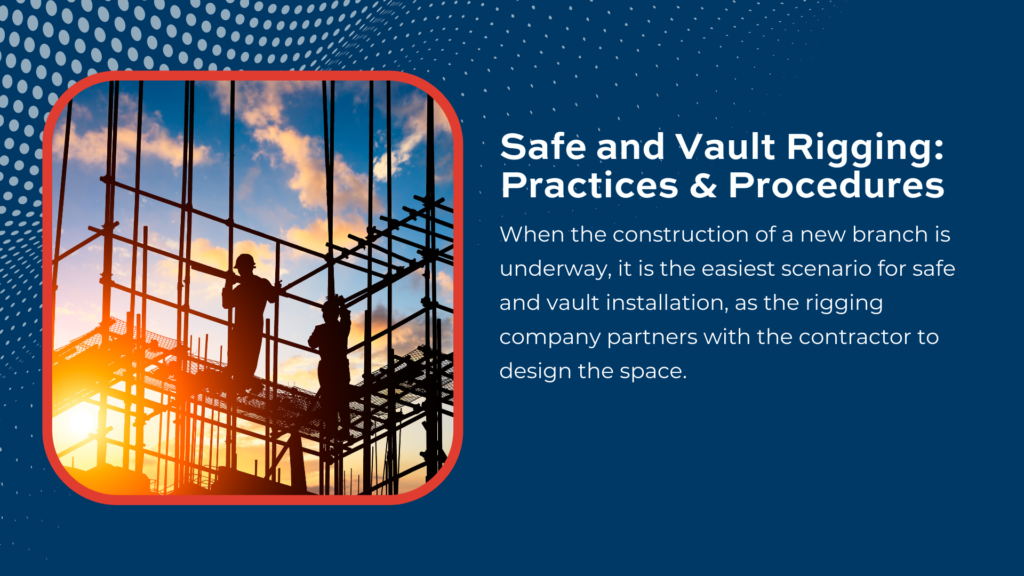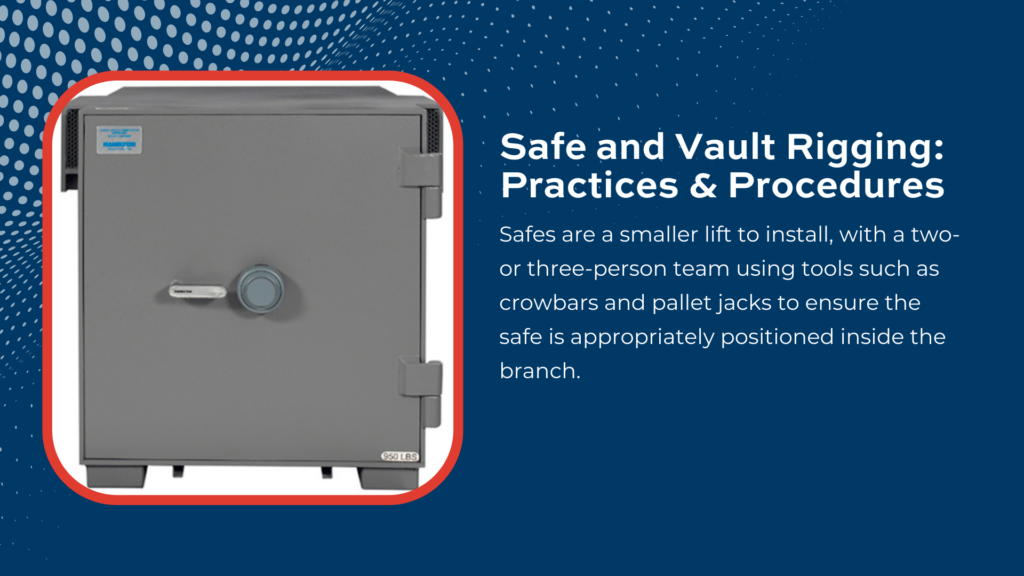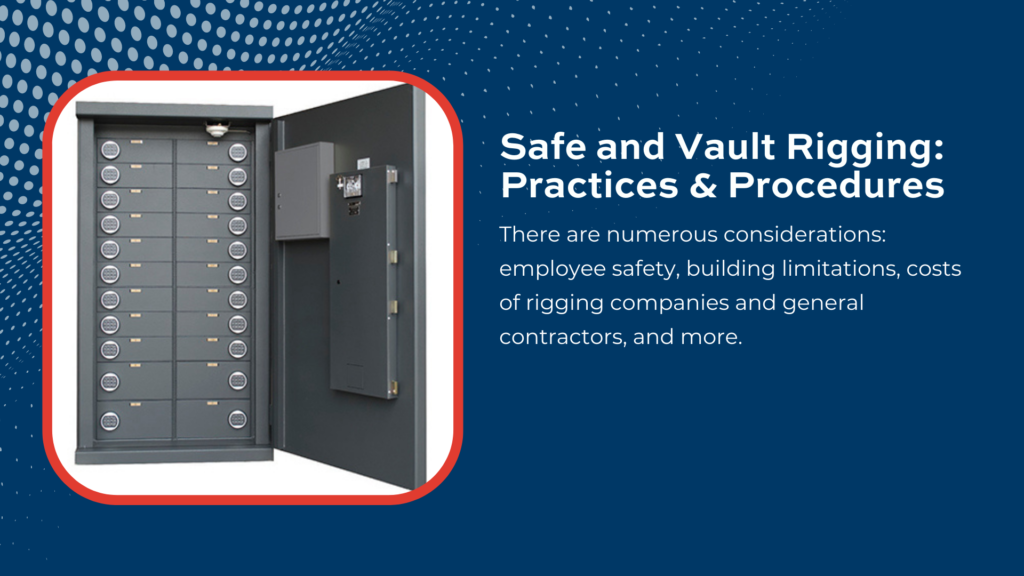When selecting a safe rigging or vault rigging company for your financial institution, it is important to choose a recommended industry expert. Not only does a rigging company consider local regulations, they hold knowledge of proper personnel and lifting equipment, address safety requirements from all angles, and have a deep understanding of your bank or credit union’s individual needs.
Installing, moving, or decommissioning a safe or vault will only happen a few number of times within a branch’s lifespan, so your employees may not be familiar with the process. At Wittenbach, we carry out these safe and vault rigging processes several hundred times per year—giving us unique insight into procedures and best practices.
Context for Safe and Vault Rigging
A key component from a use-case standpoint is surveying the location appropriately. The rigging company should compile photos of all aspects of the branch building, and connect regularly with someone on-site who is knowledgeable about the safe or vault that must be installed or removed.
- New branch construction: When the construction of a new branch is underway, it is the easiest scenario for safe and vault installation, as the rigging company partners with the contractor to design the space. Trade calls typically happen prior to the start of the project, ensuring that any potential pitfalls are vetted in advance, and that the rigging company answers all contractor and customer questions.
- Renovation, removal, and disposal: Safe and vault removal is the more frequent scenario for rigging companies such as Wittenbach. In the case of moving smaller safes, occasionally walls or doorways must be removed. When the branch acquires a new safe, the old one must also be disposed of.
Larger operations include branch closures, when vaults must be removed from the fabric of the building. Perhaps the branch has expanded, has been consolidated, or the building lease expired and the new tenant does not wish to have a vault. In this event, it is a true demolition process that consumes one to two weeks. Vault removal involves tearing down walls, decommissioning the main vault, and deconstructing its cement panels while leaving the rest of the building intact.
Best Practices for Safe Rigging and Vault Rigging
- Local licenses and regulations: “Installing either one of these devices requires being licensed to do so,” says Wittenbach SVP of Integration Solutions and industry expert Lew McAllister. General contractors must also submit drawings and specifications to the local municipality to illustrate that their flooring will hold the weight of a safe or vault.
- Safety requirements: In all safe and vault rigging procedures, it is important to understand the UL safety rating of the unit being moved. This information, provided by the safe or vault manufacturer (e.g. Wittenbach partner Hamilton), provides data on the construction and durability of each product. Per C3 Controls, “UL testing makes sure that wire sizes are correct or devices can handle the amount of current they claim to be able to. They also ensure that products are constructed correctly for the highest safety.”
Columbus McKinnon asserts that proper employee training is a good line of defense to adhere to safety requirements, and gives further best practice guidance. “Always use proper rigging techniques when lifting loads. Rigging training for your operators is important. If there is any doubt about the safety of your equipment or lift, stop the hoist, lower the load, and report the condition to your supervisor. Conduct all lifting operations so that no one will be injured in the event of equipment failure. Use proper hand signals and communication with all workers involved with the lift.”
- Proper equipment: McAllister said, “There are a tremendous amount of high-impact tools and lifting equipment required to install these safes and vaults inside of a bank or credit union.” Safes are a smaller lift to install, with a two- or three-person team using tools such as crowbars and pallet jacks to ensure the safe is appropriately positioned inside the branch. The smallest safes weigh approximately 2,500 pounds, where the larger-size vaults can range up to 15,000 pounds in total.
- Consideration for building design: Prior to installation or moving, site surveys of the branch ensure that the space is free and clear, and that the appropriate door openings and stairways will allow the unit and relevant equipment to enter the branch. Safe and vault rigging companies also must consider the outdoor conditions of the branch, such as the foundation’s condition and materials, walkways, and ensuring that the weight of the unit will not cause damage.
McAllister continued, “We have to ensure that interior floors must also be able to handle the weight, before we bring a safe in and set it on the floor. We work very closely with facilities people and general contractors, based on where the safes and vaults are being installed.” As one installation example, a walk-in vault requires the branch building to be built around it. The primary and largest vault would be rigged, lifted, and installed as a “shell”, and then the remaining building is constructed afterward.
Conclusion
When your financial institution identifies that it is time for safe rigging or vault rigging, approaching the project may at first seem daunting. There are numerous considerations: employee safety, building limitations, costs of rigging companies and general contractors, and more. When you are ready to replace your old safe, install something new, or decommission a vault from your building, Wittenbach provides the products and services you need for a seamless transformation. Contact us to discuss your bank or credit union’s upcoming safe or vault project!




